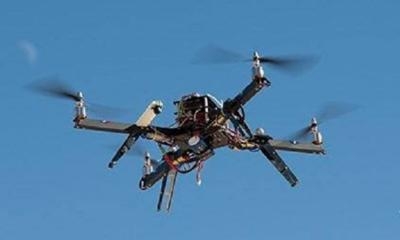Tue, Jun 14, 2016
Number Decrease Even As Drone Sales Continue To Climb
The Academy of Model Aeronautics (AMA) has released an updated analysis of the FAA’s drone data which finds a month-by-month decline in UAS sightings since peaking in August 2015. The apparent decrease in monthly sightings is remarkable as it comes despite an influx of nearly 700,000 to one million new devices sold last year. Meanwhile, consistent with AMA’s prior findings, only 3.3 percent of reports in the FAA’s latest dataset contained explicit notations indicating near misses or close calls.

“We’re glad to see a decline in UAS sightings as more people are learning how to fly responsibly,” said Dave Mathewson, executive director of AMA. “Education-focused campaigns like ‘Know Before You Fly’ are clearly paying off. Every day more and more people are getting the information they need to stay safe.”
AMA’s updated analysis reviews the 582 drone sightings released by the FAA on March 25, 2016 (“March 2016 data”). This analysis also looks at trends in the March 2016 data and the previously released August 2015 UAS sightings, which were the subject of an earlier AMA report released on September 14, 2015.
AMA is a founding member of “Know Before You Fly” (KBYF), which was created in 2014 to educate newcomers to drone technology about the safety aspects of flying unmanned aircraft and where they should and shouldn’t fly. Since its inception, www.knowbeforeyoufly.org has received almost half a million unique visitors – 81 percent of which are first time visitors. In total, the website has had over 1.2 million page views since the campaign’s launch. AMA and the KBYF campaign continue to work with manufacturers, distributors and retailers of UAS technology to include basic safety information in product packaging and at the point of sale.
Among the findings in AMA’s updated analysis:
- In keeping with AMA’s previous analysis, the number of near misses and close calls in the March 2016 data is very small – just 3.3 percent. The vast majority of the reports are sightings, which even the FAA’s language acknowledges.
- Notwithstanding estimates that as many as one million drones were sold during the 2015 holiday season, the number of sightings has not increased as one might expect. In fact, despite a dramatic increase in the number of small unmanned aircraft in the U.S. the number of reported sightings appears to be declining after peaking in August 2015.
- In line with what AMA found in the August 2015 data, many of the sightings may involve people flying responsibly and within the FAA’s current guidelines. In the March 2016 data, AMA identified 38 sightings in which drones were reported to be flying at or below 400 feet.
- Like the August 2015 data, the March 2016 data contains reports of several objects other than drones, including balloons, birds, a rocket and even a jet pack. The FAA’s drone data continues to be a “catch all” for any object spotted in the sky.
Despite the FAA’s intent to find and punish careless and reckless operators, law enforcement notifications appear to be on the decline. In the August 2015 data, nearly 20 percent of reports were not referred to local law enforcement or law enforcement notification was unknown. In the March 2016 data the number of sightings not referred to law enforcement is up to 29 percent.
(Image from file. Source: Academy of Model Aeronautics news release)
More News
DETRESFA (Distress Phrase) The code word used to designate an emergency phase wherein there is reasonable certainty that an aircraft and its occupants are threatened by grave and i>[...]
Aero Linx: The International Association of Missionary Aviation (IAMA) The International Association of Missionary Aviation (IAMA) is comprised of Mission organizations, flight sch>[...]
Also: EP Systems' Battery, Boeing SAF, Repeat TBM 960 Order, Japan Coast Guard H225 Buy Despite nearly 100 complaints totaling millions of dollars of potential fraud, combined with>[...]
Also: Viasat-uAvionix, UL94 Fuel Investigation, AF Materiel Command, NTSB Safety Alert Norges Luftsportforbund chose Aura Aero's little 2-seater in electric trim for their next gli>[...]
Also: Moya Delivery Drone, USMC Drone Pilot, Inversion RAY Reentry Vehicle, RapidFlight UAVOS has recently achieved a significant milestone in public safety and emergency services >[...]
 ANN's Daily Aero-Term (04.26.24): DETRESFA (Distress Phrase)
ANN's Daily Aero-Term (04.26.24): DETRESFA (Distress Phrase) ANN's Daily Aero-Linx (04.26.24)
ANN's Daily Aero-Linx (04.26.24) Airborne 04.22.24: Rotor X Worsens, Airport Fees 4 FNB?, USMC Drone Pilot
Airborne 04.22.24: Rotor X Worsens, Airport Fees 4 FNB?, USMC Drone Pilot Airborne 04.24.24: INTEGRAL E, Elixir USA, M700 RVSM
Airborne 04.24.24: INTEGRAL E, Elixir USA, M700 RVSM Airborne-NextGen 04.23.24: UAVOS UVH 170, magni650 Engine, World eVTOL Directory
Airborne-NextGen 04.23.24: UAVOS UVH 170, magni650 Engine, World eVTOL Directory



